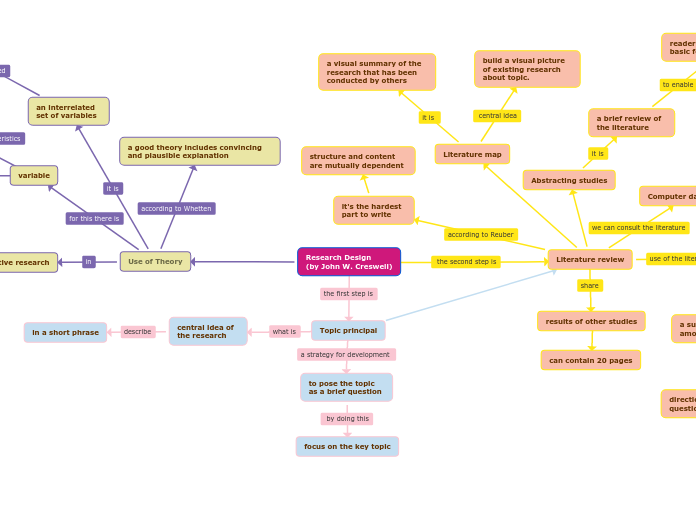Research Design
(by John W. Creswell)
Topic principal
central idea of the research
in a short phrase
to pose the topic as a brief question
focus on the key topic
Literature review
results of other studies
can contain 20 pages
Quantitative research
a substantial amount of literature
direction for the research questions or hypotheses
quantitative researcher
literature deductively
Cooper (1984)
that literature reviews can be integrative
theoretical review
existing theory
problem under study
Computer databases
provide access to thousands of journels, conference paper, etc.
ERIC, PubMed, ProQuest, Sociological Abstract, PsycINFO and SSCI
Literature map
a visual summary of the research that has been conducted by others
build a visual picture of existing research about topic.
Abstracting studies
a brief review of the literature
reader to understand the basic features of the article
it's the hardest part to write
structure and content are mutually dependent
Use of Theory
Quantitative research
variables are related to answer a research question
to make predictions (hypotheses)
variable
a characteristic or attribute of an individual that can be measured or observed
(1) temporal order and (2)observation
one variable precedes another in time
affects or causes another variable
independent variables, dependent variables, intervening, moderating, control and confounding
an interrelated set of variables
into propositions or hypotheses
a good theory includes convincing and plausible explanation
